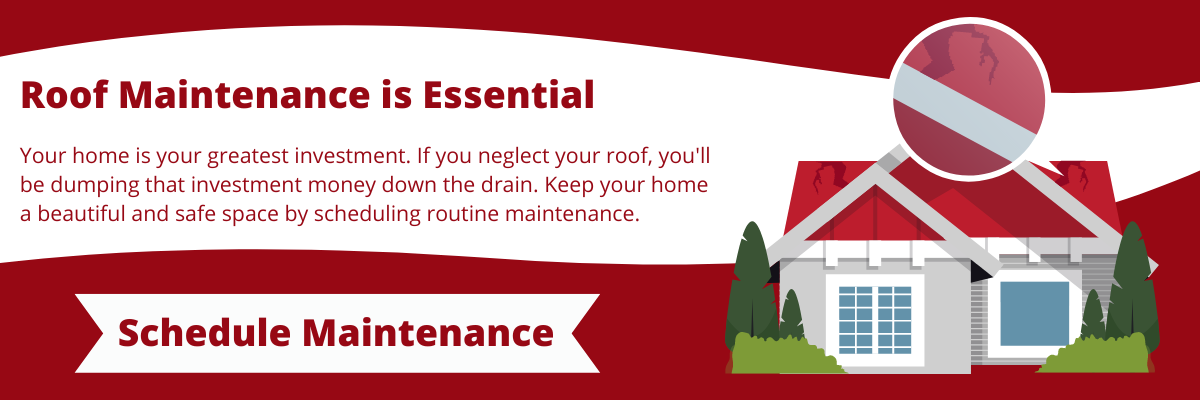
Storms happen no matter the season, and in some regions, those pesky autumn weather events can be even more devastating than ones that occur in spring and summer. If a nasty storm has your home in its sights this fall, knowing what it can potentially do to your roof and how to fix it are crucial. So, what's there to know when it comes to autumn storm season?
Even if you’ve lived in a storm-prone region your whole life, you may be educated, but that doesn’t make you exempt from the wrath of Mother Nature. She spares no one, and RoofCrafters has seen storm damage throughout the seasons time and time again.
We’ve seen the worst of the worst when it comes to roof storm damage, and although Mother Nature can’t spare you, the least we can do is provide you with some knowledge. It’s a good thing you’re here because, in this article, we’re going to break down how storms can harm your roof, ranging from wind and heavy rain, all the way to hail and airborne debris. Let’s dive right in!
Roof Storm Damage Explained
Signs of roof storm damage can vary depending on the events severity and the specific characteristics of your roof. Here are some common issues to look for:
- Missing or Damaged Shingles: Inspect your roof for missing, torn, or cracked shingles. High winds during a hurricane can cause shingles to be lifted or torn off completely.

- Lifted or Displaced Roofing Materials: Check for any roofing materials that have become detached or shifted from their original position, such as flashing tiles, or metal panels.
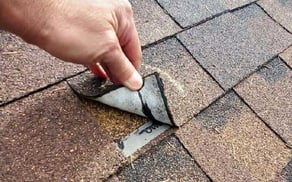
- Leaks or Water Stains: Look for signs of water leaks inside your home, such as water stains on ceilings or walls. Roof damage can create entry points for water, leading to leaks.
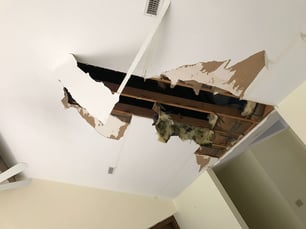
- Dented or Deformed Gutters: Examine your gutters for dents, bending, or detachment. Heavy rainfall and wind-blown debris during a hurricane can cause gutters to be damaged.
- Cracks or Splitting: Check for any cracks or splitting in roofing materials, particularly in areas exposed to direct wind or impact from debris.
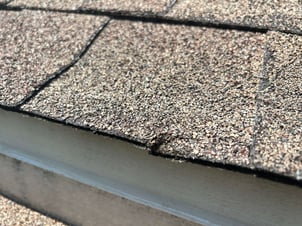
- Sagging or Uneven Roof Sections: Inspect your roof for any areas that appear saggy or uneven, which may indicate structural damage or compromised support.
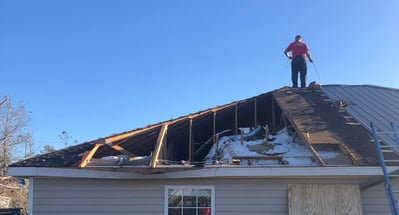
- Visible Debris or Tree Damage: Look for any visible signs of debris, branches, or fallen trees on your roof. These can cause immediate damage or create weak points that lead to future issues.
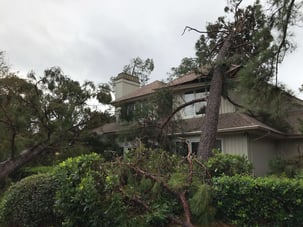
- Interior Ceiling or Attic Damage: Assess your attic or crawl space for signs of damage, such as wet insulation, mold growth, or visible holes in the ceiling.
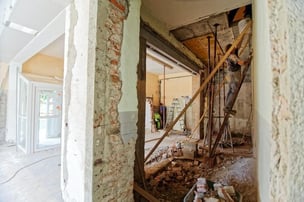
- Loose or Exposed Roofing Nails: Check for any loose or exposed roofing nails. They can indicate that the shingles or roofing materials have been lifted or damaged during the storm.

It's important to note that some signs of roof damage may not be immediately apparent, so it's advisable to have a professional roofing contractor conduct a thorough inspection to assess the extent of the damage accurately.
Assessing the Damage
Assessing roof damage following a hurricane requires a systematic approach to ensure an accurate evaluation. Take the following steps to ensure that you assess roof damage effectively.
Safety First
Before inspecting your roof, prioritize safety. Ensure the storm has passed and it's safe to access your roof. Use caution when climbing ladders or walking on the roof, and consider hiring a professional if you're unsure or uncomfortable.
Exterior Inspection
Walk around your property and visually inspect your roof from the ground. Look for obvious signs of damage, such as missing or damaged shingles, displaced roofing materials, or sagging sections. Use binoculars to get a closer look at the roof's condition. Pay attention to any areas that appear compromised or different from the rest of the roof.
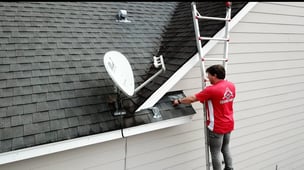
Check the Attic or Ceiling
Go into your attic or crawl space and inspect the underside of the roof. Look for any signs of water leaks, such as wet insulation, water stains, or visible holes. Use a flashlight to examine hard-to-reach areas and ensure a thorough inspection.
Conduct a Roof Surface Inspection
*This tip is only for the folks comfortable accessing their roof. It is always advisable to allow a roofing professional to execute this process for the homeowner.*
If it's safe to do so, carefully climb onto your roof. Wear appropriate footwear with good traction and use proper safety equipment. Walk across the roof, inspecting the entire surface. Look for missing, torn, or cracked shingles, as well as damaged flashing or vents.
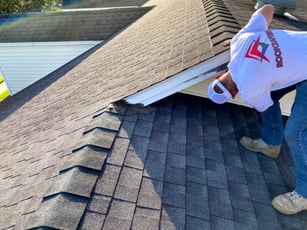
Pay attention to areas vulnerable to wind-driven rain, such as roof edges, valleys, and intersections between roof planes. Check for loose or exposed roofing nails, which can indicate damage to the underlying materials. Assess the condition of gutters, downspouts, and any other roof accessories.
Document the Damage
Take clear photographs or videos of the damage to provide visual evidence for insurance claims or professional assessments. Make notes of the specific areas or issues you observe during the inspection.
Consult a Professional
While a preliminary assessment can be helpful, it's advisable to have a professional roofing contractor conduct a thorough inspection. A professional will have the expertise to identify hidden or structural damage that may not be immediately apparent.
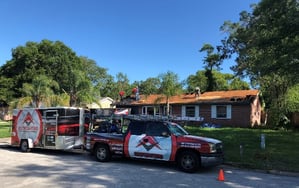
Remember, if you are uncertain about assessing your roof damage or feel unsafe, it's best to contact a reputable roofing professional who can provide a comprehensive evaluation and guidance for repairs or replacement.
Are Autumn Storms Putting a Damper on Your Season?
If so, we completely sympathize with you. Every storm has the potential to do significant damage, but how we treat our homes leading up to it can make all the difference. We can't stress this enough- if you've experienced storm damage, have an inspection conducted immediately. Time is of the essence, and you want to make sure your home is as safe as possible.
Be sure to schedule your inspection or any necessary repairs promptly. Finding a qualified contractor in your area may seem tricky, but with our “Top 10 Most Critical Questions You want to Ask Your Potential Roofing Contractor”, finding a roofer you feel most comfortable to complete the job will be a breeze.
In the meantime, feel free to browse through the extensive resources located in our learning center. I recommend reading “Does Insurance Cover Storm Damage to a Roof?” to be better educated about what comes out of your pocket if your roof ultimately does end up enduring damage from the storm.
My name is Kevin Mills, and I am the lead estimator for RoofCrafters’ Tampa division. I’m originally from Michigan, and I enjoy hunting, fishing, and spending any free time outdoors. What I’m most passionate about, though, is helping business owners and homeowners alike achieve their roofing goals, all while providing a seamless customer journey.



